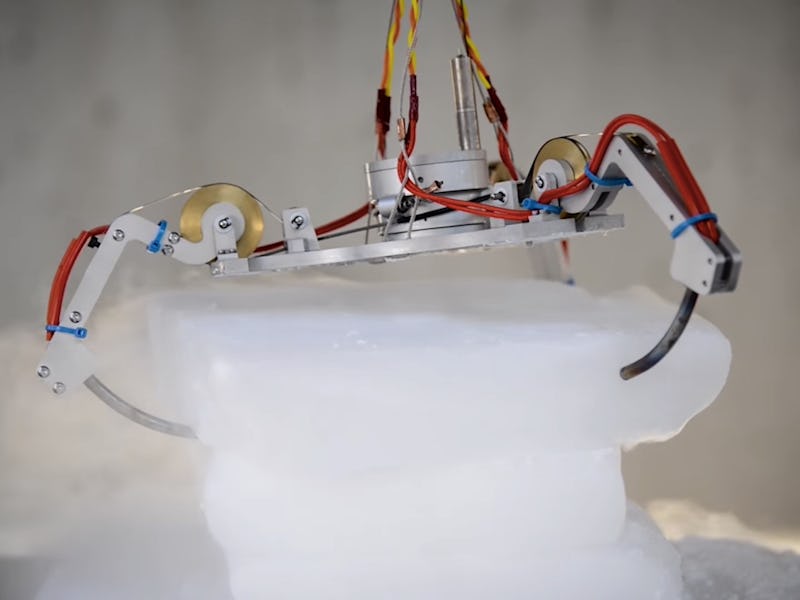Jupiter’s moon Europa could have an ocean hidden under its plains of ice, which makes it NASA’s next big contender for making it the next contender for exploration. To get there, NASA’s Jet Propulsion Laboratory has been working on a series of extremely specific robots to explore the moon. Designed to withstand the brutal radiation and unthinkable cold of the planet’s surface, the bots have some crazy features, like 30-foot folding arms and a cannon that shoots probes like a balled-up T-shirts at a basketball game.
“Robotic systems would face cryogenic temperatures and rugged terrain and have to meet strict planetary protection requirements,” Hari Nayar, a NASA scientist who leads the robotics group that oversaw the research, said. “One of the most exciting places we can go is deep into subsurface oceans — but doing so requires new technologies that don’t exist yet.”
Here are some of the wildest concepts:
5. A nuclear-powered tunneling robot
This high-powered probe runs on a plutonium heat source, which melts chips of ice and spits them out of its rear end after sawing them off. It’ll be able to saw through Europa’s incredibly thick crust of ice, which the JPL estimates to be as much as 12.4 miles deep. The probe is also able to take samples of the ice core to deliver back to the surface. The lander would be able to check the samples for biosignatures of microbial life.
4. A 33-foot Folding Arm
The scientists are also working on a prototype with a 30-foot arm that can give the Europa lander a longer reach. Previous designs, like those on the Mars or Moon landers have never extended beyond six to eight feet. The arm may also have a boring claw attached to it that could dig up to eight inches into the ice — where they believe Jupiter’s radiation may spawn microbial life.
3. A Probe-Firing Cannon Launcher
For areas that are even more difficult to reach, a projectile launcher could shoot a claw and reel it back in with collected samples. The object could launch up to 164 feet if necessary.
2. Off-Road Wheels
The moon’s geysers, which may shoot ice or gas, are likely to have very loose sediment, or sand-like ice surrounding them. To navigate the tricky terrain, the rover’s wheels would need to be both agile and light-weight. They would also need a suspension system to prevent them from sinking in.
1. An Ice-Gripping Claw
This lander would have a claw with heated prongs to help it grip onto large chunks of ice. An attached drill would then be able to hook into the chunk and lift it up.
Earlier this month, NASA announced that the Europa Clipper orbiter will be launched in the 2020. The orbiter will take several years to reach the moon — for reference, the Juno spacecraft took five years to reach Jupiter. NASA doesn’t have any plans to land rovers on the surface of the moon, but when it does it wants all of its gadgets to be ready.
“In the future, we want to answer the question of whether there’s life on the moons of the outer planets — on Europa, Enceladus and Titan,” said Tom Cwik, who leads JPL’s Space Technology Program. “We’re working with NASA Headquarters to identify the specific systems we need to build now, so that in 10 or 15 years, they could be ready for a spacecraft.”
From the looks of it, they’re off to a good start.
